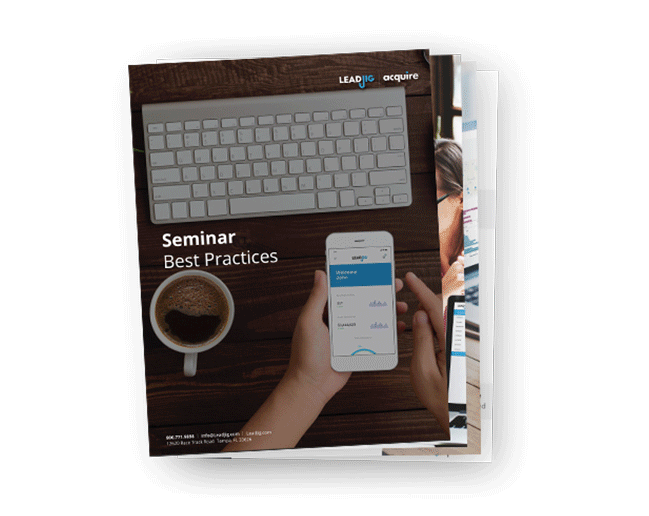Customer Lifetime Value Formula: What It Is & How to Calculate It
One of the critical components of any company’s continued success is client retention. As years of countless marketing research has taught us, it’s substantially more profitable to retain a customer than it is to acquire a new one. However, to effectively plan for your business’s future, you need to run the customer lifetime value formula (LTV or CLV).
With a clear understanding of how to calculate customer lifetime value, you can properly define your marketing budget.
What is Customer Lifetime Value (CLV)?
Knowing your client’s lifetime value helps you define specific metrics and milestones as a predictor of business success. A customer LTV lets you know how much money you can expect to generate from a single client throughout their life.
After you learn how to calculate lifetime value, you can determine how much:
- Budget needs to be allocated toward marketing campaigns
- Potential future revenue you can expect
- Investment needs to be put towards retention
- Money is necessary to develop strategies to acquire new customers
- Commitment should be invested into different target demographics
Once you’ve applied the lifetime value formula, you will know how much revenue to reasonably expect from a single customer. Using historical data, you can adequately predict a client’s future spending behavior, allowing you to make sound business strategies to grow your business.
How to Calculate Customer Lifetime Value
One of the critical components of any company’s continued success is client retention. As years of countless marketing research has taught us, it’s substantially more profitable to retain a customer than it is to acquire a new one. However, to effectively plan for your business’s future, you need to run the customer lifetime value formula (LTV or CLV).
With a clear understanding of how to calculate customer lifetime value, you can properly define your marketing budget.
Simple CLV Formula
Using the annual average revenue per user (ARPU), multiple that by the expected lifespan (or the number of years of likely retention) and then subtract the amount invested in initially acquiring the client.
Customer lifetime value formula: (ARPU * Years Expected) - Cost of Acquisition (COA) = CLV
For example, your business's client yearly ARPU is $2,500, and you reasonably expect to retain them for 10 years, and their COA was $3,000, the formula would be thus:
($2,500 * 10) - $3,000 = $22,000 CLV
Knowing that you can expect a return of $22,000 on a $3,000 investment seems like a smart business decision.
This customer lifetime value formula is best utilized if you can expect stable revenue from your clients. Companies that offer a subscription service where client retention can clearly dictate how much they spend can make excellent use of this model. However, if your company offers multiple packages or a variety of products, you may have to consider a different lifetime value calculation.
Expanded Simple CLV Formula
If your customers don’t provide a stable rate of revenue, then you may have to expand the simple customer lifetime value formula to include additional factors.
You might have to include the company’s deductibles, such as:
- Overhead towards client retention
- Production costs
- Annual retention rate
For example, your business’s client’s annual ARPU is $5,000 with an expected lifetime of 10 years with the company. However, your overhead for retention per client is $100, the production cost is an additional $100, and you have a COA set at $3,000. The calculation would be as follows:
($5,000 - $100 - $100) * 10 - $3000 = $45,000 CLV
The more complex your company’s business model is, the more that you will have to adjust the formula to fit your needs.
Examples and Case Studies
While every major business will know its CLV, here are two examples to help you further enhance your understanding of this process.
Amazon
According to a Consumer Intelligence Research Partners report, owners of the Amazon Kindle spend over $1,200 annually on Amazon’s marketplace, compared to less than $800 annually spent by non-Kindle owners. With the knowledge of its CLV in different sectors, Amazon could wisely make marketing decisions going forward.
Zappos
Zappos has an interesting business model that not many people expected to succeed. It instituted a 365-day returns policy, free shipping for delivery, and returns. This seems like it would be primed from disaster. However, Zappos determined that the customers who performed the most returns also had the highest lifetime value through careful analysis. To ensure that it retained its high-paying client base, Zappos allowed them free returns at no charge.
How to Improve Customer LTV
If you’re looking to maximize on your CLV, here are a few tips to get you started:
Improve Customer Service
Retaining a client is six to seven times cheaper than trying to acquire a new one. By investing in customer service, you’ll be able to improve client satisfaction, resulting in repeat customers.
Focus on Specific Demographics
Like Zappos, you want to make sure you’re targeting your high-value clients. If a certain demographic is easier to retain, then you’ll want to market specifically towards them. As the COA for most of your clients will be the same, you might as well capitalize on directing it towards your best clients.
Provide Customer Engagement Content
Whether you’re providing material that is educational, promotional, or requesting feedback, when you engage your client base, you’re building a relationship. Repeated exposure and points of contact make it a simple task to retain a client and thereby increasing their CLV.
Are you trying to increase your financial seminar client’s lifetime value, or searching for a better way to improve your marketing? LeadJig is here for you. Contact us today to request a demo of our proprietary software!





